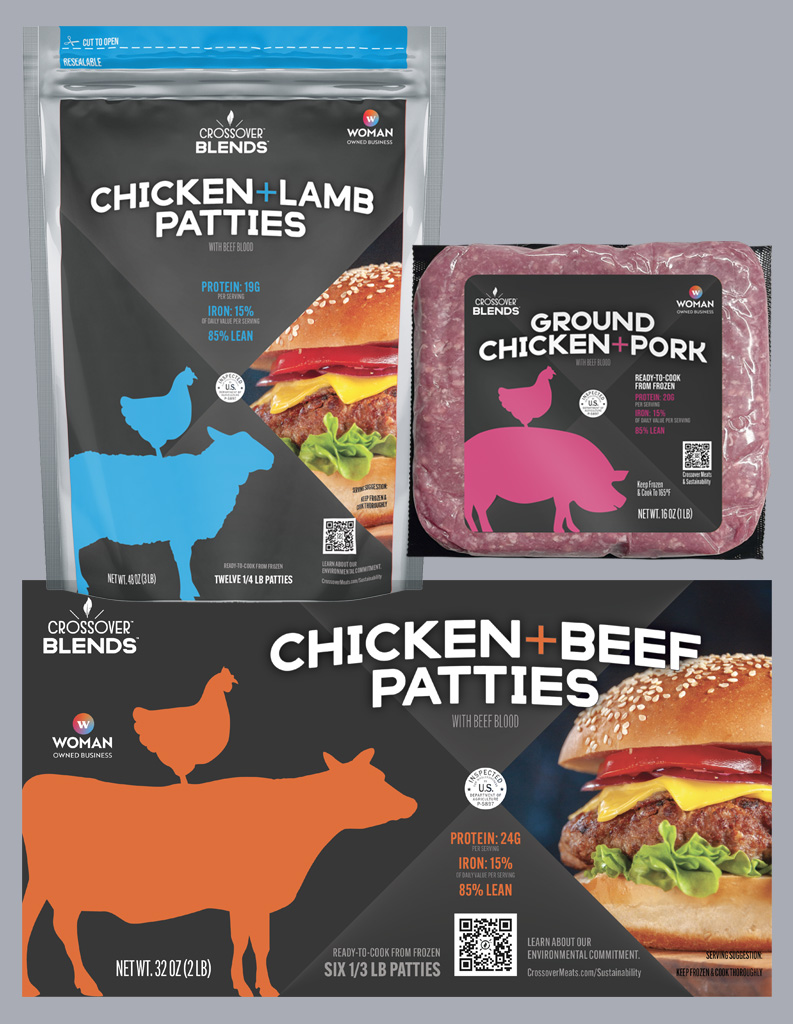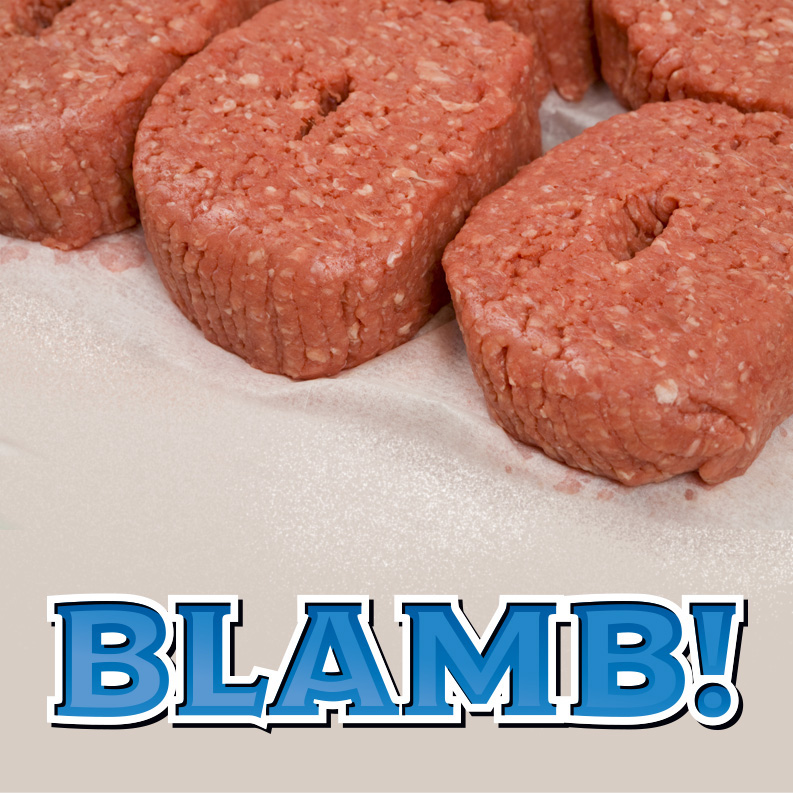Sales, Sales Management
& So Much More
Food Industry sales – direct hunting and sales management – are at the heart of what I do. I’ve sold into some of the industry’s biggest players, and enabled other teams to do the same. I also bring an unprecedented understanding of product development, branding, and marketing to bear for my employers, partners, and personal projects.
Here are some of the great projects I’ve worked on.

Sales, Operations, and Product Management: Crossover Meats
As part of an incredibly small team that brought Crossover Meats’ amazing, patented line of blended meat CPG products from zero in the midst of COVID to 2000 contracted retail stores by March 2025 – as well as partnerships with US Foods, Sysco, Aramark, UNFI, C&S Wholesale, and others – I’ve been blessed with an opportunity to lead sales, develop products, and manage almost every touchpoint between vendors and customers. These designs are aimed at a refresh for late 2025.
Product Development: Ethnic Menu Protein Program
Drawing on a fanaticism for ethnic cuisine and markets, I developed a comprehensive ethnic menu protein program for broadline distributors that was unlike anything in the market. The program focused first on authentic Latin American fare, from discada to arrachera, then brought in East Asian proteins, and shifted to Central Asian and Middle Eastern products.


Product Development: Bag O’ Ribs
In every American city large enough to have a minor league baseball team, restaurant operators are getting clobbered across all three primary cost segments: land, labor, and materials. Energy prices, rents, and food and consumables are up, while qualified labor is both hard to find and expensive.
Fundamentally, industrial manufacturing is the movement of a process from local execution to where it can be done at scale, and with accuracy and precision.
Originally developed for foodservice, our individually-sliced sous vide ribs reduce labor, energy, and food waste costs by providing restaurant operators an amazing solution that can deliver on amazing flavor and time-to-table. Semiology recruited a manufacturing partner with plans to launch Bag o’ Ribs in retail in 2025.
New Branded Development
I was brought into Barrie House to bring in new customers, increase existing club store sales, manage merchandising and merchandising teams, control its branded efforts, and develop branding for prospects building new product lines. My efforts helped save their Sam’s club account, and launch their co-branded line of Martha Stewart coffee.


Product Development: Blamb!
The 1990s saw the rise of masstige (mass prestige) consumption, as shoppers skimped on a range of products so that they could afford to trade up on something else. In the 2009 recession, discount retailers like Family Dollar noted that their customers wanted national brands in their cupboards whenever they could get them — even if in small quantities.
The economic conditions following the pandemic revealed new shopper behavior: a resistance to shopping down when in a down economy. By 2020, shoppers didn’t want to go back to the highly-processed, mass market products some of them grew up with. The old TV dinners are gone. In their place are prepared meals with top-notch ingredients. As a result, marketers are creating new ways to provide upscale items with right-scale prices.
Semiology partnered with lamb producers to introduce Blamb! – a special blend of lamb and beef that takes the corners off lamb’s intense flavor while also reducing its price — the two biggest issues American shoppers have with the protein. Blamb! Is designed to make lamb more affordable and more popular.
Manufacturer Brand Development: Mountain City Meat Company for Walmart and Albertsons
Retailers continue to move toward private label. With caution. Often, new products launch under a manufacturer’s brand, then get rolled into a retailer’s private label.
Way back in time, all of the conglomerated national brands on our shelves were once manufacturer’s brands.
Manufacturing companies are necessarily made up of operations and sales people. They’re generally not well-equipped for branding efforts — that comes later. I help them navigate it all with branding that is designed for their positioning strategy.


Product Development
Too early. Around 2010, it started to become clear that Walmart’s traditional strategy of creating destinations in the outskirts needed an update. Cities were building around them, and that meant a changing demographic within certain locations. In 2024, “households making more than $100,000 a year accounted for 75% of the company’s gains” on a profit increase of 8.2% (CNN). Ten years ago, I recruited a deli and sliced meats manufacturer to develop a refrigerated end cap destination dedicated to elevated proteins of all types using Walmart’s tagline as the private label brand.
Brand Matching
Most manufacturers do not want to create brands of their own – for good reason. Launching a new brand is brutal work. When looking to approach existing brands for new business, it helps to be able to look the part.


Manufacturer Brand Development: Luna Roasters
Luna Roasters is a clever coffee company in Denver, Colorado. Initially a holding company, Luna acquired Florida roaster Boca Java, which excelled at roast-and-ship-to-order long before the pandemic change in buyer behavior. Luna Roasters then acquired regional favorite Boyer’s Coffee. I was brought in to build sales for Boyer’s (we launched at Safeway), convert Luna Roasters into a solid Third Wave brand, which I helped place at Sam’s Club, and create a new, even more elevated brand for their Boulder Organic acquisition. Good people who make great coffee.
Product Development: Welly
Welly is a line of better-for-you, vitamin and fiber-enriched gelatin dessert aimed at healthcare and seniors. Semiology has had the product under development for a while, and is looking to launch in late 2025.


Product Development: Phong’s
East Asian dried meats are vastly more diverse than what most of us are used to in the United States. From seasonings for which the vast Orient is known to how the meats are prepared – more tender than Western slices and sliced and shredded all the way down to “floss,” (pork yuk sung) – the options are endless, and the category is in dire need of a reboot.
Brand Development: First Tap
My old boss and mentor called up. “Gray, my son’s girlfriend – she lives in Cleveland, too – wants to start an ice cream company with her mom.”
“So everyone has amazing, innate, naturally-born senses of style and taste and does not need professional advice. Cool.”
“Yes. That. I’ll send you the concept. I just need you to clean it up a bit. They’re not looking to be anything big right now.”
Well, that wouldn’t do.
Long story short, I guided them to the real, marketable USP in their product that tells a story about the home team brand making wholesome foods from Ohio’s own maple trees. They’re still learning the ropes. Back at markets in and around Cleveland spring and summer 2025. The first tap is the best of the season.
